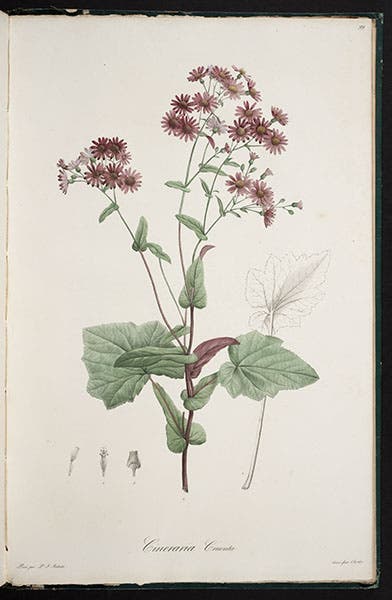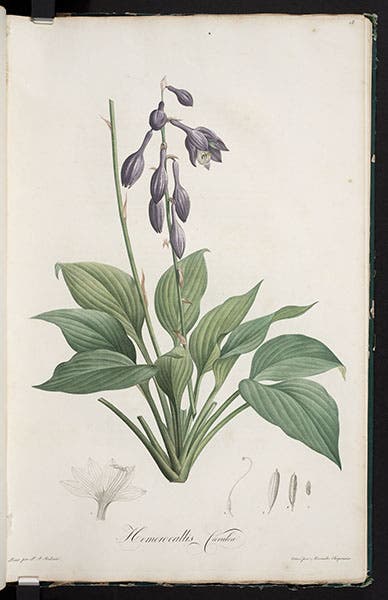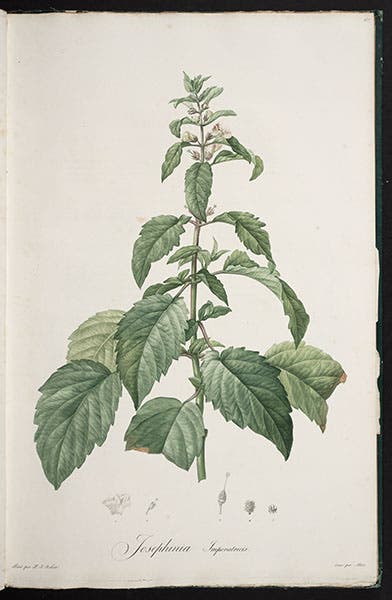Scientist of the Day - Etienne Ventenat
Étienne-Pierre Ventenat, a French botanist, was born Mar. 1, 1757. In the late 1790s, Ventenat was asked to describe the garden of Jacques Cels, a grower and marketer of rare and imported plants, and he did so in 1799, with the plants illustrated by Pierre-Joseph Redouté. This was the very year when Napoleon’s Josephine bought a chateau at Malmaison, which she proceeded to populate with exotic animals and plants of her own, brought back by various French voyages of exploration. She was apparently so impressed by the book on Cels’ garden that she asked Ventenat to write a description of her gardens, and Redouté to provide the illustrations. The result was the marvelous Le Jardin de la Malmaison.
It was issued in fascicles of 6 plates and 6 pages of text over the course of two years, 1803-05, and then bound up with a title page, usually in two tall folio volumes. We have such a set in the History of Science Collection, and it is one of our finest floras. At one time, it was slated for display in our Darwin bicentennial exhibition, The Grandeur of Life (2009), but it lost out to John Thornton’s Temple of Flora (1807), which is equally magnificent.
We show five of the plates here, plus one detail. The first two images show Cineraris cruenta, now called Pericallis cruenta, a composite from the Canary Islands and Madeira; a detail is followed by the entire plate. Next is Lavatera phoenicia, a mallow, also from the Canaries (third image), followed by Hemerocallis caerulea, now Hosta ventricosa, the familiar blue hosta (fourth image).
The final images show two plants that were first named and described by Ventenat. First (fifth image) is Josephinia imperatricis, an import from Australia, named after Ventenat’s patron Josephine, and given the epithet "imperatricis" even before she became empress.
The final plate shows Calomeria amaranthoides, which Ventenat named after Napoleon, cleverly converting the Italian “Bonaparte” into its Greek analog, Kalo-meria (beautiful parts). It too was brought to Malmaison from Australia.
Redouté gets most of the credit for Le Jardin de la Malmaison, since he did the artwork, and he has already been honored here as a Scientist of the Day; it is nice to have a chance to give Venenat his due. Fifteen years ago, when the Jardin was reissued with commentary, all 120 plates by Redouté were reproduced. The text by Ventenat was omitted completely. In our opinion, such drastic excision was unfair to Ventenat, and to the modern reader.
Dr. William B. Ashworth, Jr., Consultant for the History of Science, Linda Hall Library and Associate Professor, Department of History, University of Missouri-Kansas City. Comments or corrections are welcome; please direct to ashworthw@umkc.edu.











